11 Methods You Can Use to Increase Average Order Value (AOV)
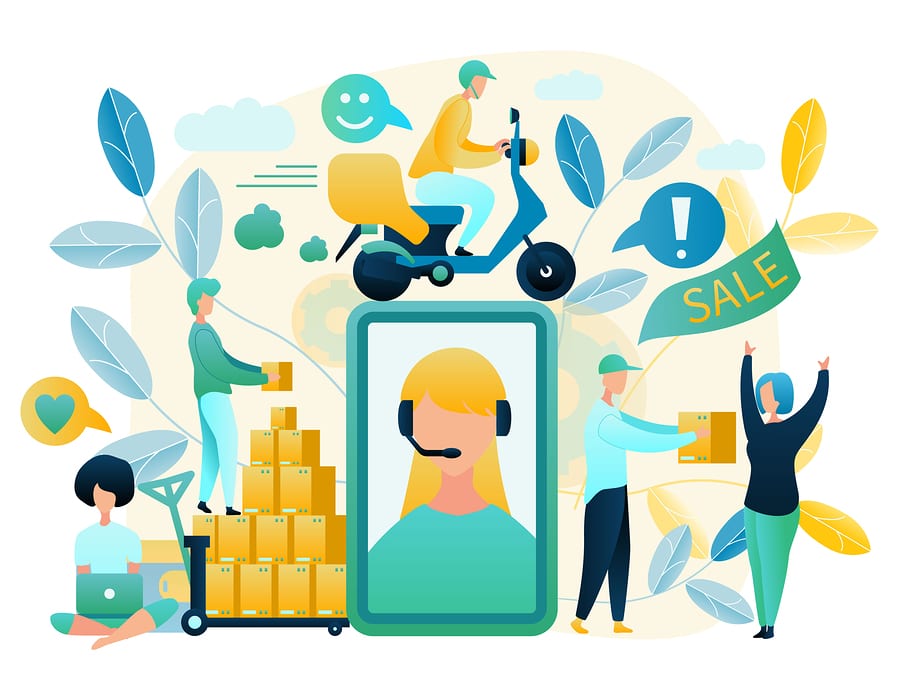
That’s why savvy sellers should optimize their stores to increase average order value. This brings up your total revenue without having to hunt down tons of new customers because, after all, bigger sales equal bigger profits.
Sound too good to be true? Read on to learn about how to increase AOV and how it impacts your ecommerce business.
What is Average Order Value?
Average order value, or AOV, is a measure of revenue per transaction in your online store. You can easily calculate it by dividing your total revenue by the number of orders that were placed.
For example, if you sold $5,000 in goods and 100 orders were placed, your AOV is $50. It’s an easy way to keep track of your store’s performance, and you can calculate it as often as you want to when using ecommerce reporting software.
Though they are similar, AOV and Average Basket Value are not the same. The former refers to revenue, while the latter refers to the number of items sold per transaction. Both, however, relate to the customer lifetime value, which is each customer’s total spend over the course of time they shop at your store. Ideally, AOV, ABV and CLV are all high.
Increasing average order value is one foolproof way to also increase your bottom line. Each order has associated fulfillment costs, so there is a greater profit when there is a wider discrepancy between the revenue and the fulfillment expenses. Therefore, you need to convince your customers to add more (or more expensive) items to their shopping carts before making the purchase.
Here are 11 methods you can use to increase AOV across the board.
Set a Free Shipping Threshold
Setting a free shipping threshold is the oldest trick in the book, but there is a reason it is such a classic: it works. Simply choose a minimum spend, such as $50 or whatever amount seems most appropriate for how your items are priced, and ship orders of that amount or higher for free.
By setting the minimum amount customers must spend to “unlock” free shipping, you almost guarantee they will spend that amount every single time. Why is this? Consumers do not feel there is a tangible value associated with shipping. In fact, a recent UPS study revealed 52% of online shoppers will add more items to their shopping carts to qualify for free shipping, showing that they place more value on the products you sell than on the shipping required to get those products delivered.
Research shows 65% of cart abandonment is linked to shipping costs, so offering free shipping in any capacity will improve your total conversions. If you can increase your average order value at the same time, you’ll have hit the jackpot.
Highlight Higher Priced Items
The design of your website influences which items customers choose, especially if you sell multiple variants of the same product. You can draw the eye to the expensive items or variants by highlighting them via color or placement.
For example, by adding a brightly colored box around a product listing, you make it stand out. Placing that product listing in the top center of the page achieves the same highlighting effect because it is in a prominent space where the eye naturally goes.
If it’s a best-selling product, make sure you say so. (If it’s not, don’t lie and say it is—customers are quick to spot lies, and this will tarnish your brand reputation.) The label “bestseller” adds social proof because there are several customers who have bought the product in the past.
Keep in mind that each ecommerce shopping cart service already offers specific design tools that you can use to improve your store’s look and feel. Doing so can help you attract new sales and, over time, can serve to increase average order value.
Recommend Related Items
Many shoppers visit an online store with a product already in mind, so once they search for and find that product, they will make the purchase and leave. This means a smaller shopping cart, a lower order value and, as a result, a lower average order value for your online store. It’s no use distracting these focused shoppers by offering items they don’t want, but there is plenty of room to offer targeted product recommendations and/or complementary products.
Targeted product recommendations come in two forms: Popular products and related products.
Popular products, often called “bestsellers,” are, as you guessed, the items you sell the most. In the consumer’s mind, these products have already been vouched for by all the customers who have purchased the products in the past. They’re a safe bet to add to the shopping cart, therefore increasing AOV.
Related products are riskier in this regard, but there is still rhyme and reason. By taking a product the shopper already likes and suggesting other products that are similar (such as other items featuring the same cartoon character) there is a greater chance the shopper will add more items to the cart.
Adding ecommerce social proof to the mix will bolster these recommendations. Try creating a section of your product pages and checkout page entitled “Customers Also Bought” or “Customers Also Viewed” to show real examples to hesitant shoppers. Online reviews and user-generated content like social media posts are other ways to let customers do the convincing for you.
Complementary products, on the other hand, are simply accessories to what is already in the shopping cart. Sometimes this is literal—complementary products to a dress, for example, are shoes and jewelry and a purse. These suggestions help the shopper “complete the look.” There is no guesswork, so she’s likely to add all the items to her cart just to make the experience as easy as possible.
Provide Bundles
Recommended and complementary products will certainly increase your average order value, but there are times when shoppers don’t see how they benefit from adding these items to their carts.
This is where product bundles come into play. Bundling products and then offering a discount on those bundles shows shoppers that the products are “supposed to” go together. Shoppers then see the immediate benefit in the bundle discount, so they perceive the bundle as a better deal.
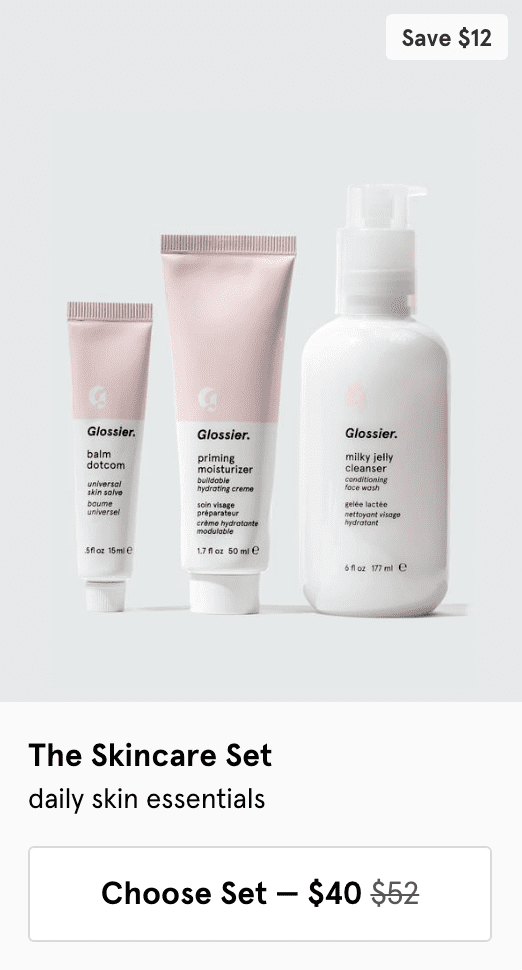 If you’re unsure of where to start, track each product’s performance and determine which three are your bestsellers. Do they make sense to sell together as a bundle? Try selling “the bestseller bundle” or “the superstar set” at a slight discount and watch your average order values soar.
If you’re unsure of where to start, track each product’s performance and determine which three are your bestsellers. Do they make sense to sell together as a bundle? Try selling “the bestseller bundle” or “the superstar set” at a slight discount and watch your average order values soar.
Offer Discounts with Minimum Spend
No matter how price-conscious consumers are, most of them are happy to discover a deal when they’re shopping online. This is the idea behind the free shipping minimum as well as this tactic: offering discounts with minimum spend.
It may seem counterintuitive to actively lower the value of a shopping cart, but it provides shoppers with an incentive to purchase more items and unlock that discount. PetSmart regularly hosts sales that advertise discounts to customers who spend in different brackets, such as in this example below.
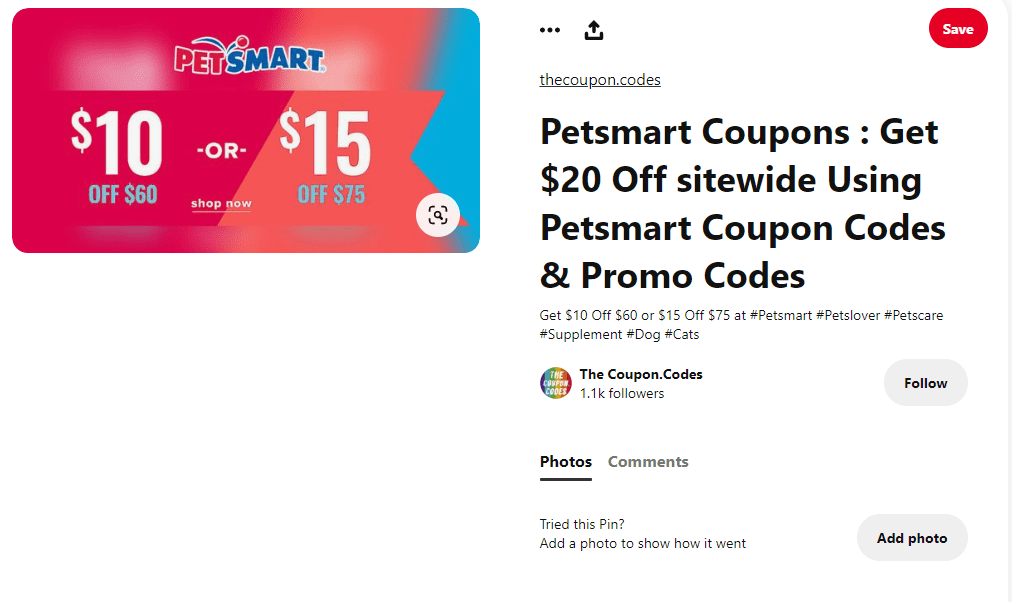
Ecommerce store Blackout Vapors gives us a great example of how spend-based savings work. On their home page, they feature three offers that discount the final sale price by a certain amount based on a spending threshold. Using coupon codes, they’re able to track how effective those spending thresholds were. It’s a great way to a/b test your funnel while increasing average order value.
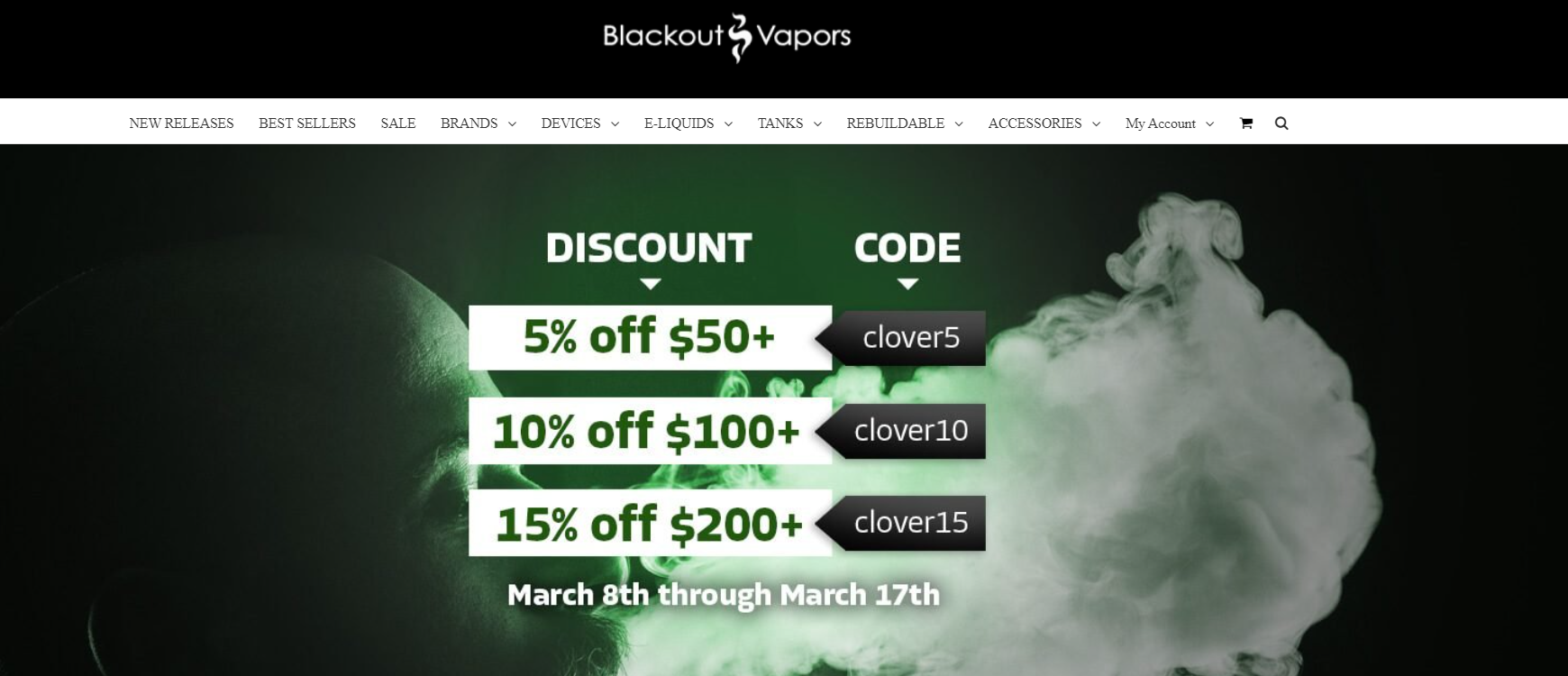
Make it Easier to Purchase
Shoppers want an easy way to purchase a product, and many also make buying decisions based on their current budget. By adding simple elements to mix like an option to pay for the purchase over time, as well as ample places to buy the product, including from other marketplace listings you might have open, you’ll increase order value exponentially.
Case in point is this listing by Shop Liquid Rubber for Waterproof Sealant that you can use on sheds, foundations, ponds, cement, etc. As you can see, consumers can use Sezzle to pay for the purchase over time, and they also have the option to buy the product on Amazon if they feel more comfortable shopping on the marketplace.
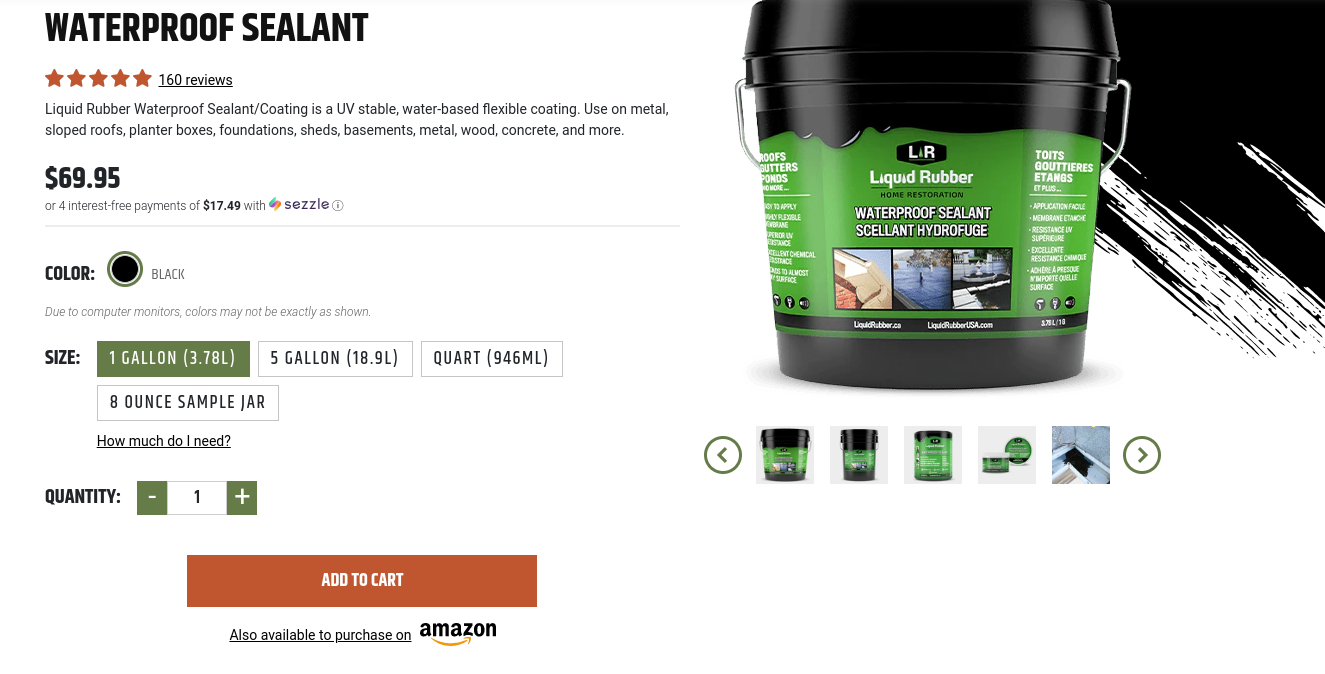
Switch up Your Shipping Policy
We already discussed having a free shipping threshold, but what if you could always offer free shipping?
This would make your online store far more attractive to price-minded shoppers, not to mention 80% of consumers want free shipping, and free shipping promotes a 15-20% increase in sales. Now that the standard has been set by Amazon’s Prime membership service, this policy is almost expected at other stores around the Web.
If free shipping simply isn’t in the cards, you can absolutely include an expedited shipping option, which 67% of your shoppers want to be offered. There are occasions where “fast” trumps “free” in today’s fast-paced world, and consumers want to be able to choose which they’d rather have if they can’t have both.
Soon, shoppers will realize your store is advantageous to your competitors and will start ordering more products from you instead. This increases AOV over time.
Simplify Returns
If you read this blog regularly, you know the major benefits you can realize by offering hassle-free returns.
For starters, you’ll attract far more consumers—80% of shoppers want a no-questions-asked returns policy, and 55% will be deterred by a policy that they feel is an “obstacle” to online shopping in general. Considering that 66% of shoppers will read the policy before making a purchase, you have the power to influence a majority of those who visit your online store just by making your ecommerce returns easier.
Simplified returns also boost customer loyalty, as seen with Zappos, where 75% of customers are repeat buyers. It should come as no surprise that loyal customers far outspend new customers, so increasing the ratio of those who come back to shop will also increase AOV.
Additionally, the implementation of hassle-free returns will give consumers the confidence they need to take a chance on items they wouldn’t have considered if they knew the returns process was going to be cumbersome. They’ll be more apt to add extra products to their shopping carts, increasing the average order value in the process.
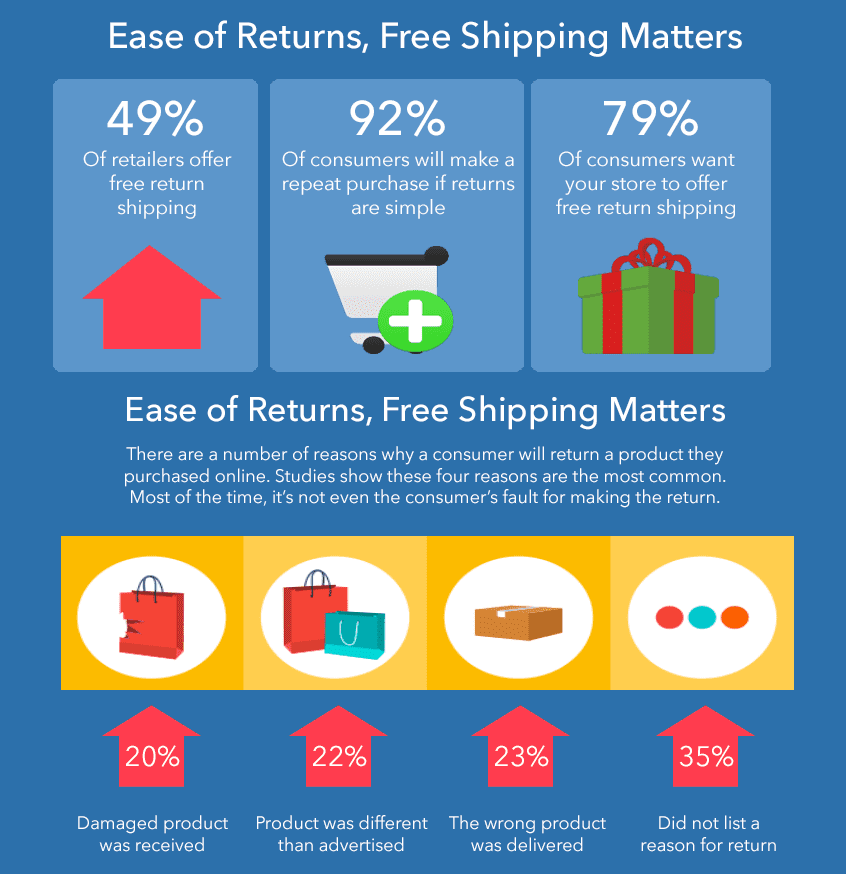
Hold Flash Sales
In many cases, creating a sense of urgency is the key to convincing a shopper to finally make a purchase. Cart abandonment research reveals many shoppers want to take their time to decide if a purchase is worth it, especially when it comes to high-ticket items, and will abandon their carts for that reason.
Flash sales combat this by offering a use-it-or-lose-it discount that shoppers won’t want to miss. As a result, customers will buy more and ultimately increase the average order value in their haste to purchase before the deals expire.
Chances are, you already hold flash sales on Black Friday, Cyber Monday or on your own brand’s designated discount day (such as Amazon’s Prime Day or Wayfair’s Way Day.) It’s easy to see the advantages of these days when reviewing your store’s performance.
There are plenty of other benefits of flash sales: clearing out excess inventory, building brand awareness and generating leads, for starters.
It’s the perfect way to refresh your warehouse while getting more eyes on your brand at the same time. If you need further convincing, consider that online stores that hold flash sales grow twice as fast as those that don’t.
Add a Post-Purchase Discounted Upsell
Think of the last time you shopped online. After completing the purchase, you were probably directed to an order confirmation page or a “Thank You” message.
This, according to Growth Hackers, is a missed opportunity to upsell. Here’s what the think tank suggests instead: After customers make a purchase, they’re directed to an upsell page that displays a related/complementary product or perhaps an item they viewed while shopping. The page notes that there is a discount that expires as soon as they leave the page. Not wanting to pass up on a good deal, shoppers will buy the upsell. Boom—your average order value increases automatically.
The post-purchase discounted upsell combines shoppers’ interest in discounts with FOMO, or fear of missing out, to increase AOV. It’s a one-two punch that encourages the customer to spend more on the spot or else lose the opportunity to use the discount.
To test this tactic, PayKickstart implemented the post-purchase discounted upsell on one website with a total revenue of $113,164 and an average order value of $66.96. These totals increased immediately, and by the end of the testing period, both revenue and AOV had more than doubled.
Launch a Loyalty Program
Loyal customers are an invaluable resource to all ecommerce sellers. It costs far less to market to an existing customer than to capture a new one, and these existing customers are the ones who spend more year after year. Specifically, loyal customers spend 120% more than new customers, per research from StitchLabs.
How do you create a loyal customer, then? The most obvious answer is to create high-quality products that tell your brand’s story and to develop relationships with your customers, so your brand becomes a natural part of their lives. As far as actionable steps, however, launching a loyalty program certainly helps.
Customers who are part of a loyalty program get exclusive access to new releases, flash sales and special discounts. It’s no wonder they’re so popular. In turn, the e-tailer reaps the benefits of repeat customers and increases the brand’s bottom line.
What You Should Do Now
Here are 3 ways ReadyReturns can help you deliver amazing return experiences that eliminate prepaid labels and boxes, delight customers, and protect your margins:
Schedule a Demo – See how ReadyReturns turns product returns into your competitive advantage with “Amazon-like” returns and cost-saving features.
Start Your Free Trial of ReadyReturns (No CC Required) – Set up in minutes. Instantly offer QR code returns, product exchanges, and custom return rules that turn frustrated customers into repeat buyers.
Try ReadyCloud at No Cost – Why manage shipping and returns separately? Get ReadyShipper X, ReadyReturns, and more in one unified platform for seamless fulfillment and order management.
Share On:








